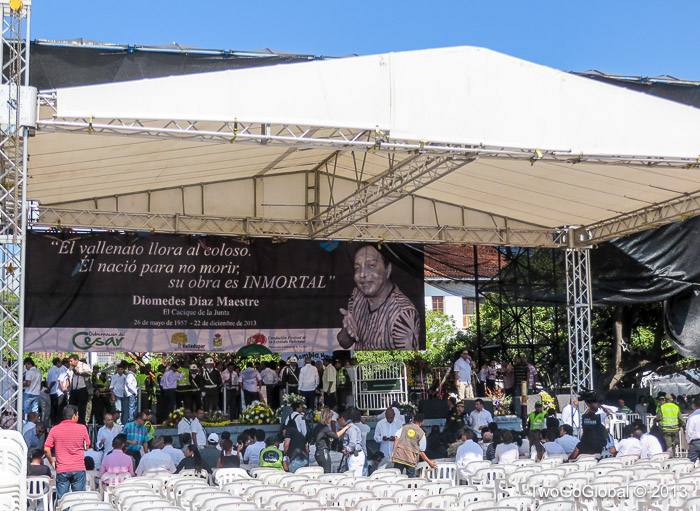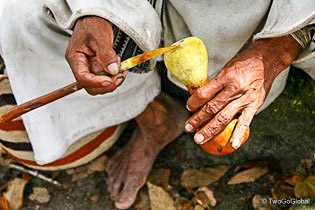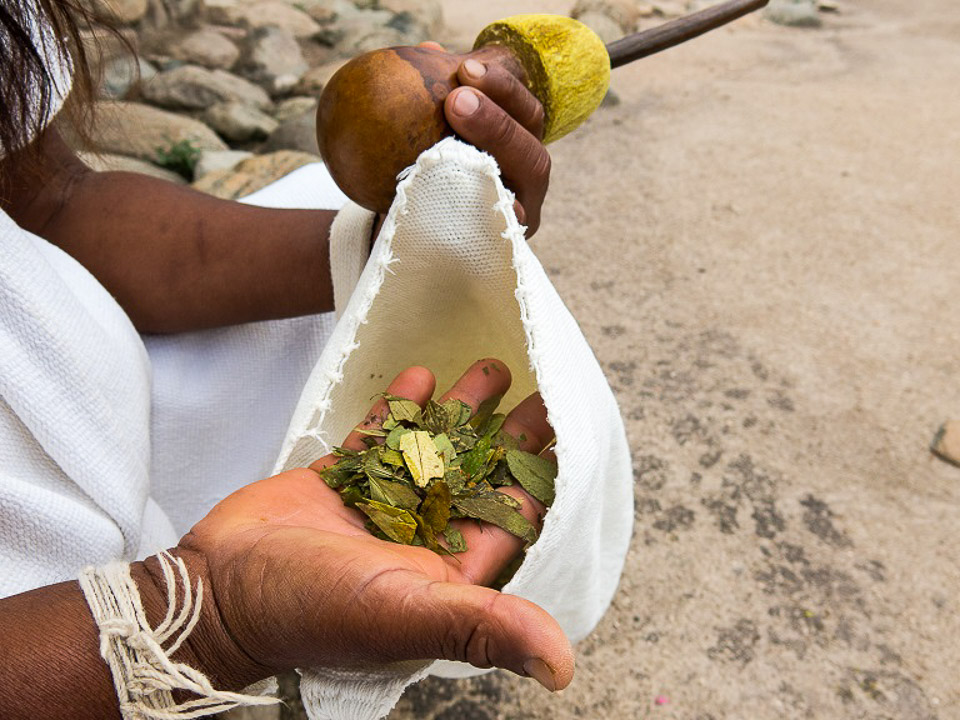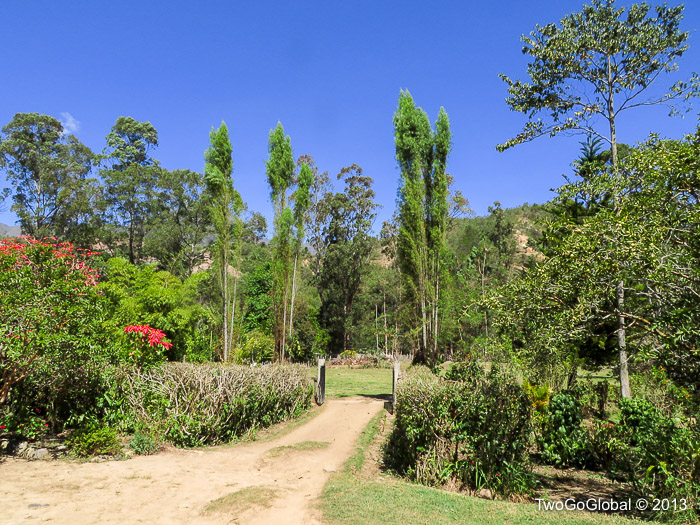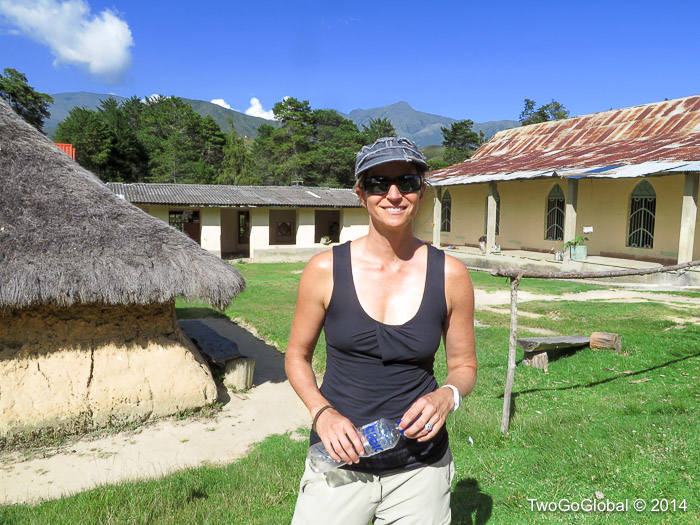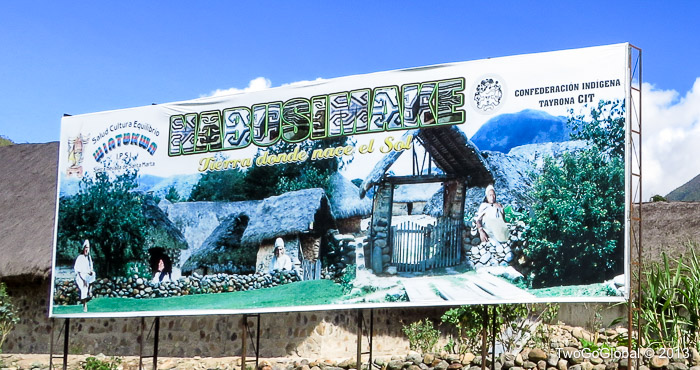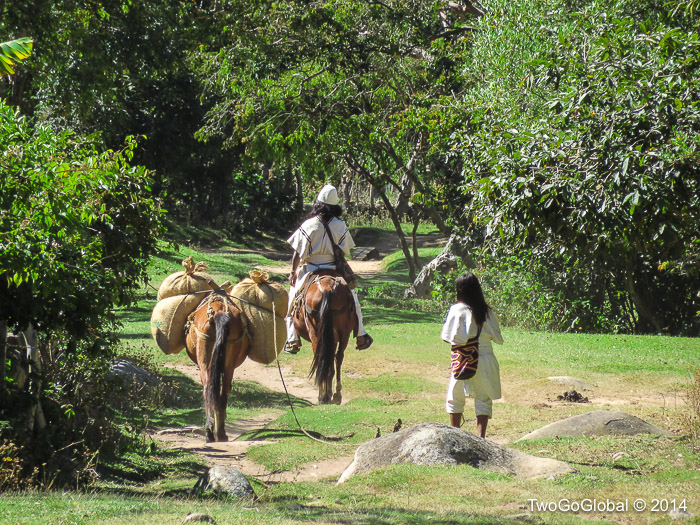Nabusimake, the home of the Arhuaco indigenous Indians, is thankfully way off the Gringo trail, even though it’s only around four hours off extremely rough road from Valledupar. First off we had to take a shared taxi to Pueblo Bello, around an hour from Valledupar, which again leave when they are full – must be a common place to go to as this did not take long at all. Our transportation was a regular car so it was safe to assume that the road there must be in half decent shape. We arrived in a little over an hour, thankfully to an actual town with life, tuk-tuks and indigenous galore. I was expecting another La Mina with nothing going on! It was mid afternoon on Friday and we already knew that the 4WD’s that continue on to Nabusimake only leave in the mornings, giving us time to explore and find a place to rest our heads for the night. We went back to basics with accommodation after finding Residencias el Carmen, consisting of many small, in fact very small rooms built around a courtyard – we both wished we had bought our silk liners with us as the bed looked well slept in, but for only $12 we were content!
The closest resemblance of any place we could think of would be Hobbiton in Lord of the Rings, where we expected Gandalf to come down the trail with his fireworks and horse drawn cart at any moment. It really was an oasis with no trash, friendly people, well kept houses and a river that meandered through. We had heard and read many reports of the Arhuaco people being very shy, not wanting to speak or acknowledge the presence of outsiders, and their general dislike of having visitors. In our twenty four hours we didn’t experience this attitude, in fact the children came and sat with us or followed us on the trails, and the adults always replied to a hola or du, with the latter being hello in their native tongue.
We had left Pueblo Bello with no place to stay in Nabusimake, giving our fellow passengers something to laugh at when asked by the driver which hotel we wanted! The only accommodation we had read about was called Milas, which fortunately the driver knew of and dropped us at. $30 each for room and all meals seemed liked a good deal, really our only option with no other places to eat. Whilst waiting for lunch we walked back to the river where we immediately attracted the attention of a group of playful young girls, with one hopping from stone to stone across the river with me and the others sitting with Andrea, staring at her blue eyes and blond hair. Fair skinned outsiders were obviously a rarity!
Some of our best moments of the mere twenty four hours we spent in the community were of the children, their mischievous and inquisitive faces, and the way they would just stop and stare, probably more so at my newly formed beard than anything else! To get a look into what they were thinking when they saw us would have been amazing. We struggled to find anyone that turned away when they saw us or when we spoke to them, something we expected from what others had said. Maybe greeting them with du, instead of hello or hola worked for us, although that still didn’t work for photo opportunities – the times that I asked always came with a negative reply, and on the occasions that I did take photographs they are either in the distance, of them walking away, or when they were looking away.
I think it is inevitable that someday the road between Pueblo Bello and Nabusimake will be paved, leading to an influx of visitors and the loss of their privacy and way of life as they enjoy today – we are both so lucky to be able to experience locations such as this, especially without seeing any other backpackers or non-Colombian tourists, which were also very few and far between.
A special muchas gracias to Barbara for making sure that if we visited any one place in Northern Colombia that it was Nabusimake.
December 27th – December 29th 2013

